Garden Maintenance in Battersea
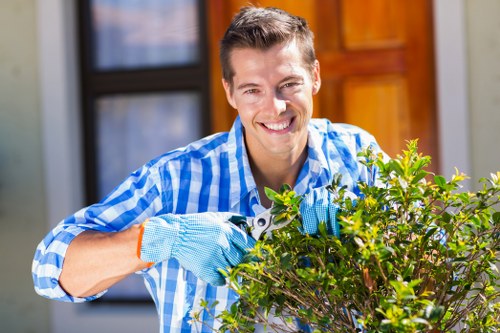
Maintaining a beautiful garden in Battersea requires dedication, knowledge, and the right set of tools. Whether you're a seasoned gardener or a novice, understanding the essential aspects of garden maintenance can help ensure your outdoor space remains vibrant and inviting throughout the year.
**Garden maintenance** is not just about keeping weeds at bay or mowing the lawn regularly. It's about creating a harmonious environment where plants thrive, and the overall aesthetic appeal enhances the beauty of your home.
In Battersea, with its unique climate and soil conditions, it's important to tailor your garden care routines to suit local environmental factors. From choosing the right plants to understanding seasonal changes, effective garden maintenance can transform your Battersea garden into a personal oasis.
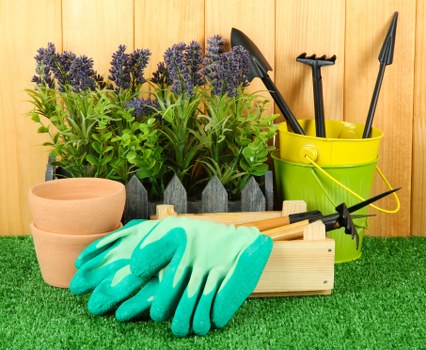
Understanding the Climate of Battersea
Battersea experiences a temperate maritime climate, characterized by mild winters and warm summers. This climate is conducive to a wide variety of plants, allowing gardeners to cultivate diverse species.
However, the unpredictable weather patterns, including occasional frosts and heavy rains, can pose challenges. Understanding these climatic nuances is crucial for effective garden planning and maintenance.
**Key climatic factors** to consider include:
- Average temperatures throughout the year
- Rainfall patterns and drainage
- Sunlight exposure and shading
- Wind levels and protection
Choosing the Right Plants for Battersea Gardens
Selecting plants that are well-suited to Battersea's climate ensures resilience and reduces maintenance efforts. Opt for native species or those known to thrive in similar conditions.
**Popular plant choices** in Battersea include:
- Roses and perennial flowers
- Shade-tolerant shrubs
- Drought-resistant herbs
- Seasonal annuals for color variety
Incorporating a mix of evergreen and deciduous plants can provide year-round interest and structure to your garden.
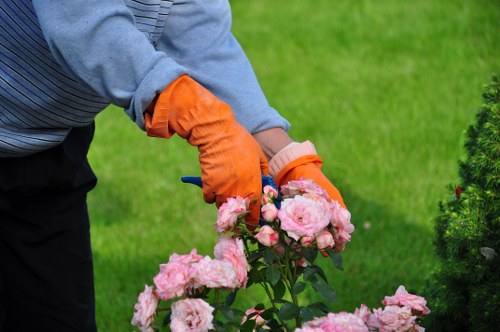
Essential Garden Maintenance Tasks
Regular maintenance tasks are the backbone of a healthy garden. Staying on top of these tasks ensures that your plants remain healthy and your garden looks its best.
**Key maintenance activities** include:
- Lawn Care: Regular mowing, aerating, and fertilizing keep your lawn lush and green.
- Pruning and Trimming: Removing dead or overgrown branches promotes healthy growth.
- Weed Control: Keeping weeds at bay prevents them from competing with your plants for nutrients.
- Watering: Ensuring adequate water supply, especially during dry spells.
- Pest Management: Identifying and managing pests to protect your plants.
By systematically addressing these tasks, you can maintain a well-kept garden with minimal stress.
Seasonal Maintenance Tips
Different seasons bring unique challenges and opportunities for garden maintenance. Adapting your care routines to the changing seasons can enhance your garden's health and appearance.
**Spring:** Focus on planting new species, fertilizing, and preparing beds for the growing season.
- Seed sowing and transplanting
- Pruning spring-flowering trees
- Applying organic compost
**Summer:** Emphasize watering, weeding, and protecting plants from excessive heat.
- Regular watering schedules
- Mulching to retain moisture
- Pest monitoring and control
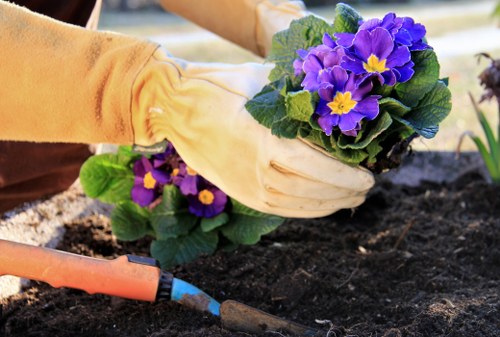
Tools and Equipment for Effective Garden Maintenance
Having the right tools is essential for efficient garden maintenance. Quality equipment not only makes tasks easier but also ensures precision and care for your plants.
**Essential garden tools** include:
- Pruners and shears: For precise trimming and shaping of plants.
- Lawnmower: Keeps your grass neatly trimmed.
- Garden fork and spade: For digging and aerating soil.
- Watering can or hose: Ensures plants receive adequate moisture.
- Wheelbarrow: Facilitates the movement of soil, plants, and debris.
Investing in high-quality tools can reduce maintenance time and improve the overall health of your garden.
Modern Garden Maintenance Techniques
Advancements in gardening technology have introduced innovative techniques that enhance garden maintenance efficiency.
**Notable techniques** include:
- Drip Irrigation Systems: Provide precise watering, reducing water waste.
- Automated Lawn Mowers: Offer consistent mowing without manual effort.
- Soil Testing Kits: Help in assessing soil health and nutrient levels.
- Eco-friendly Pest Control: Utilize natural predators and organic solutions.
Incorporating these modern techniques can lead to a more sustainable and hassle-free garden maintenance experience.
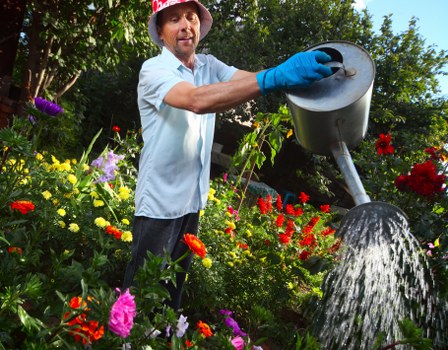
Hiring Professional Garden Maintenance Services in Battersea
While DIY garden maintenance can be fulfilling, hiring professional services ensures expert care and saves you valuable time.
**Benefits of hiring professionals** include:
- Expertise: Professionals bring specialized knowledge and skills.
- Time-saving: Frees up your schedule for other activities.
- Quality Results: Ensures your garden is maintained to the highest standards.
- Customized Care: Tailored maintenance plans to suit your garden's specific needs.
When selecting a garden maintenance service in Battersea, consider the following factors:
- Experience and reputation
- Range of services offered
- Customer reviews and testimonials
- Pricing and value for money
- Availability and scheduling flexibility
Choosing the Right Garden Maintenance Company
To ensure you receive the best service, take the time to research and evaluate potential garden maintenance companies in Battersea.
**Steps to choose the right company:**
- Check for licenses and certifications
- Ask for references or view past projects
- Compare quotes from multiple providers
- Assess their knowledge of local plants and climate
- Ensure they offer comprehensive services
Taking these steps can help you find a reliable partner for your garden maintenance needs.
Eco-friendly Garden Maintenance Practices
Adopting eco-friendly practices in garden maintenance not only benefits the environment but also promotes the health of your plants and soil.
**Sustainable practices** to consider include:
- Using organic fertilizers and pesticides
- Composting garden waste
- Implementing water-saving irrigation systems
- Planting native and drought-resistant species
- Encouraging biodiversity with pollinator-friendly plants
These practices contribute to a more resilient and sustainable garden ecosystem.
Benefits of Eco-friendly Maintenance
Choosing sustainable garden maintenance methods offers numerous advantages:
- Reduces environmental impact
- Enhances soil fertility and structure
- Promotes healthier plant growth
- Attracts beneficial insects and wildlife
- Decreases dependency on chemical inputs
Embracing eco-friendly techniques can lead to a healthier, more vibrant garden while supporting local biodiversity.
Contact us today to learn more about sustainable garden maintenance options in Battersea.
Planning and Designing Your Battersea Garden
A well-designed garden not only looks appealing but also functions efficiently. Proper planning is essential to ensure that your garden meets your aesthetic and practical needs.
**Key elements** of garden planning include:
- Assessing available space and layout
- Selecting suitable plants and materials
- Incorporating features like pathways, seating areas, and water elements
- Considering sunlight, shade, and soil conditions
- Ensuring accessibility and ease of maintenance
Collaborating with a professional garden designer can help bring your vision to life, ensuring a harmonious and functional outdoor space.
Maximizing Space in Urban Gardens
In Battersea, where space can be limited, maximizing garden space is crucial. Strategic planning can help you make the most of your available area.
**Tips for maximizing space:**
- Use vertical gardening techniques, such as trellises and wall-mounted planters
- Choose compact and multi-functional furniture
- Incorporate mirrors to create the illusion of more space
- Opt for plants that grow vertically to save ground space
- Create designated zones for different activities
These strategies can help you create a lush and functional garden, even in smaller spaces.
Seasonal Planting and Care
Each season presents unique opportunities for planting and care. Understanding the seasonal requirements of your garden ensures continuous growth and beauty.
**Spring Planting:** Focus on new growth and preparing for the blooming season. Plant bulbs, annuals, and perennials that thrive in spring conditions.
- Planting tulips, daffodils, and crocuses
- Transplanting shrubs and trees
- Starting vegetable gardens
**Summer Care:** Maintain hydration, manage pests, and ensure plants receive adequate sunlight.
- Regularly watering and mulching
- Pruning to promote airflow
- Monitoring for signs of stress or disease
Autumn Preparation
As summer fades, prepare your garden for the cooler months by harvesting crops, cleaning up debris, and protecting plants from frost.
**Autumn tasks** include:
- Planting spring-flowering bulbs
- Raking fallen leaves and adding them to compost
- Covering delicate plants
Proper autumn care sets the stage for a successful next growing season.
Soil Health and Fertility
Healthy soil is the foundation of a thriving garden. Ensuring your soil has the right balance of nutrients and organic matter supports robust plant growth.
**Improving soil health** involves:
- Adding compost and organic matter
- Testing soil pH and adjusting as needed
- Practicing crop rotation to prevent nutrient depletion
- Using cover crops to enhance soil structure
Regularly assessing and amending your soil promotes long-term garden vitality.
Understanding Soil Types
Different plants thrive in different soil types. Understanding your soil composition helps in selecting appropriate plants and amendments.
**Common soil types:**
- Sandy Soil: Drains quickly but lacks nutrients.
- Clay Soil: Retains water but can be heavy and compacted.
- Loamy Soil: Balanced mixture with good drainage and fertility.
- Peaty Soil: High in organic matter but can be acidic.
Adjusting your soil based on its type ensures optimal plant health and growth.
Mulching for Garden Health
Mulching is a vital garden maintenance practice that offers multiple benefits, including moisture retention, temperature regulation, and weed suppression.
**Benefits of mulching:**
- Retains soil moisture
- Regulates soil temperature
- Prevents weed growth
- Enhances soil structure as it decomposes
**Types of mulch** include organic options like wood chips, straw, and compost, as well as inorganic choices like gravel and rubber mulch. Selecting the right mulch depends on your garden's specific needs and aesthetic preferences.
Applying Mulch Effectively
Proper application of mulch ensures maximum benefits without harming your plants.
- Spread mulch to a depth of 2-3 inches around plants
- Avoid piling mulch against plant stems to prevent rot
- Refresh mulch annually to maintain its effectiveness
By following these guidelines, you can optimize mulching for a healthier, more resilient garden.
Water Management in Your Garden
Efficient water management is crucial for maintaining a healthy garden, especially in areas like Battersea where weather can be unpredictable.
**Key water management strategies:**
- Installing drip irrigation systems to deliver water directly to plant roots
- Collecting and using rainwater for garden irrigation
- Improving soil drainage to prevent waterlogging
- Using moisture sensors to optimize watering schedules
Implementing these strategies ensures your garden receives adequate moisture without waste.
Rainwater Harvesting
Rainwater harvesting is an eco-friendly way to supply your garden with natural water. Collecting rainwater reduces dependency on municipal water sources and promotes sustainability.
**Steps to set up rainwater harvesting:**
- Install rain barrels or tanks connected to your downspouts
- Use screens to filter debris from the collected water
- Distribute the harvested rainwater through hoses or drip irrigation systems
- Regularly clean and maintain your rainwater collection system
With proper setup, rainwater harvesting can significantly contribute to your garden's water needs.
Book your service now to implement effective water management solutions in your Battersea garden.
Pest and Disease Management
Protecting your garden from pests and diseases is essential for maintaining plant health and vitality. Effective management involves prevention, monitoring, and intervention.
**Integrated Pest Management (IPM)** is a sustainable approach that combines multiple strategies to control pests and diseases with minimal environmental impact.
- Regularly inspect plants for signs of pests or disease
- Encourage beneficial insects like ladybugs and bees
- Use organic or natural pest control methods when necessary
- Maintain plant health through proper watering and nutrition
By adopting IPM practices, you can effectively manage garden health while minimizing chemical usage.
Organic Pest Control Methods
Organic pest control emphasizes the use of natural solutions to manage garden pests.
**Effective organic methods include:**
- Introducing natural predators such as birds and beneficial insects
- Using neem oil or insecticidal soap
- Applying diatomaceous earth to deter crawling insects
- Planting pest-resistant plant varieties
These methods help maintain a balanced ecosystem in your garden, promoting natural pest control.
Enhancing Garden Aesthetics
Aesthetics play a significant role in garden maintenance. A visually appealing garden not only enhances your home's curb appeal but also provides a serene space for relaxation.
**Ways to enhance garden aesthetics:**
- Incorporate a variety of plant colors and textures
- Add garden ornaments and decorative elements
- Create focal points with unique plants or structures
- Use lighting to highlight key areas
- Maintain tidy pathways and borders
Balancing functionality with beauty ensures your garden is both practical and pleasing to the eye.
Creating Outdoor Living Spaces
Transforming parts of your garden into outdoor living spaces can enhance both functionality and enjoyment.
**Ideas for outdoor living spaces:**
- Installing a patio or deck with seating arrangements
- Setting up a pergola or gazebo for shade and structure
- Adding a fire pit for evening gatherings
- Creating a vegetable or herb garden for fresh produce
These additions create versatile areas for entertainment, relaxation, and leisure within your Battersea garden.
Maintaining Garden Structures
Garden structures like sheds, fences, and pergolas require regular maintenance to ensure their longevity and functionality.
**Maintenance tips for garden structures:**
- Inspect for signs of wear or damage regularly
- Apply protective coatings to prevent weather-related deterioration
- Repair or replace broken parts promptly
- Clean structures to remove dirt and debris
Proper care of garden structures enhances their appearance and extends their lifespan.
Seasonal Care for Garden Structures
Different seasons necessitate specific maintenance tasks for garden structures to withstand weather variations.
**Seasonal tasks include:**
- Spring: Clean and inspect structures, apply fresh paint or stain if needed.
- Summer: Ensure proper ventilation and protection from intense sunlight.
- Autumn: Clear debris and prepare structures for winter.
- Winter: Protect structures from snow and ice buildup.
Adhering to seasonal maintenance ensures garden structures remain sturdy and attractive year-round.
Conclusion: Achieving a Beautiful Garden in Battersea
Effective garden maintenance in Battersea involves a combination of regular care, informed planning, and the adoption of sustainable practices. By understanding the local climate, selecting suitable plants, and implementing proper maintenance routines, you can cultivate a garden that thrives and delights.
Whether you choose to maintain your garden yourself or hire professional services, the key is consistency and attention to detail. A well-maintained garden not only enhances your home's aesthetic appeal but also provides a peaceful retreat where you can connect with nature.
Contact us today to embark on your journey to a stunning Battersea garden that stands the test of time.